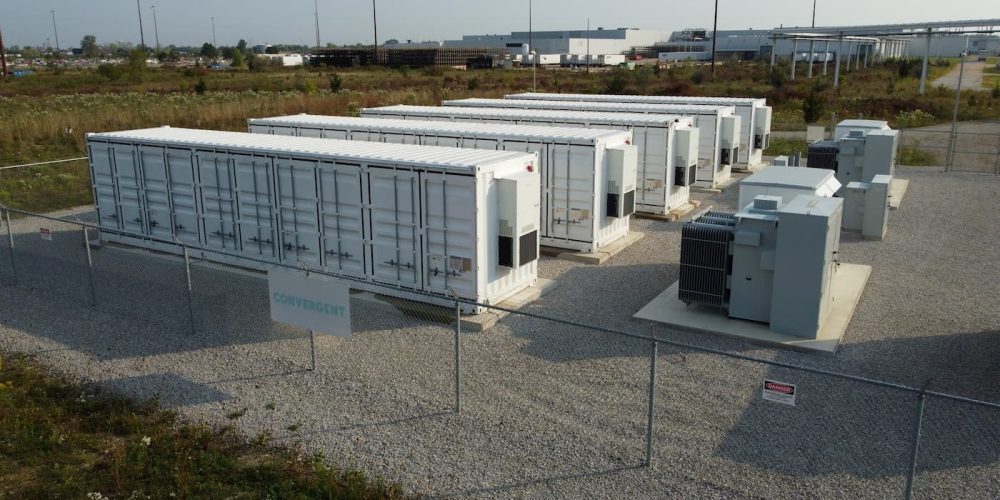
In an interesting plot twist, the same Ford plant used to make vehicle engines is now using the technology that powers EVs to reduce the facility’s carbon footprint.
Ford using the power of EVs to further reduce carbon footprint
Ford is partnering with Convergent Energy and Power, an energy-storage-solutions provider, to use lithium-ion battery technology to reduce its carbon emissions.
Convergent uses artificial intelligence (AI) powered battery storage to help companies reduce their carbon footprint while lowering energy costs. Since its founding in 2011, Convergent has continuously progressed the battery-energy-storage market forward, insisting it can play a vital role in the transition to a clean energy future.
As the need to cut reliance on fossil fuels continues to become more evident with an escalating global energy crisis, the company is developing energy storage and solar-plus-storage (solar PV with added battery storage) systems that are helping pave the way for a cleaner future.
Convergent has committed over $500 million for energy storage and solar-plus-storage (500 MW/800 MWh) capacity in operation or under development.
Ford’s Essex engine plant in Windsor, Ontario, will utilize a (4 MW/8 MWh) battery energy storage system to power a portion of the facility while power consumption is highest. Thomas Reeber, Plant Manager at Ford Essex, talks about how the new energy solution can help the facility, grid, and community:
The battery storage system provided by Convergent Energy and Power is a strong example of how batteries can support the auto industry at the plant level while also supporting the electric grid serving Ford and the surrounding community.
The new energy solution from Convergent is a first for Ford, but with automakers looking to reduce costs (and, more importantly, their carbon footprint) where they can, this may be the start of a new trend.

Electrek’s Take
It is interesting to see a facility that builds gas engines implementing EV battery tech to help reduce its carbon footprint and save on energy costs.
Meanwhile, energy storage can help maximize the benefits of renewable energy. For example, electricity rates are highest during the most in-demand hours and, perhaps more importantly, the most carbon-intensive times.
The reason for this is that when energy demand is high, the current solution to meet it is by using outdated gas “peaker plants” that are inefficient, more expensive to operate, and generate higher carbon emissions.
They are called peaker plants because they generally only run when electricity demand peaks. The US relies on over 1,000 natural gas and oil-fired peaker power plants.
However, battery storage solutions paired with renewable energy, such as those provided by Convergent, can allow grid flexibility to lower costs and reduce air pollution.
Tesla and Elon Musk have deployed and suggested several Megapack projects to avoid adding new peaker plants while providing stationary energy-storage solutions instead.
The more energy-storage options available, the less we need to rely on fossil fuels. The ability to store energy captured from renewables like solar or wind can help ease the transition to a clean energy sector.
For example, less than 25% of proposed large-scale renewable energy projects become commercially operational because of transmission hurdles. Battery storage and renewable energy can help solve this issue while lowering energy costs and reducing air pollution.
Subscribe to Electrek on YouTube for exclusive videos and subscribe to the podcast.
Author: Peter Johnson
Source: Electrek



